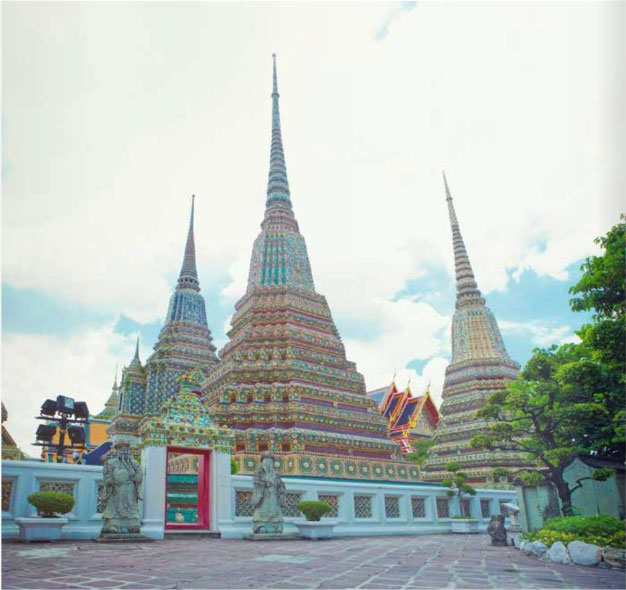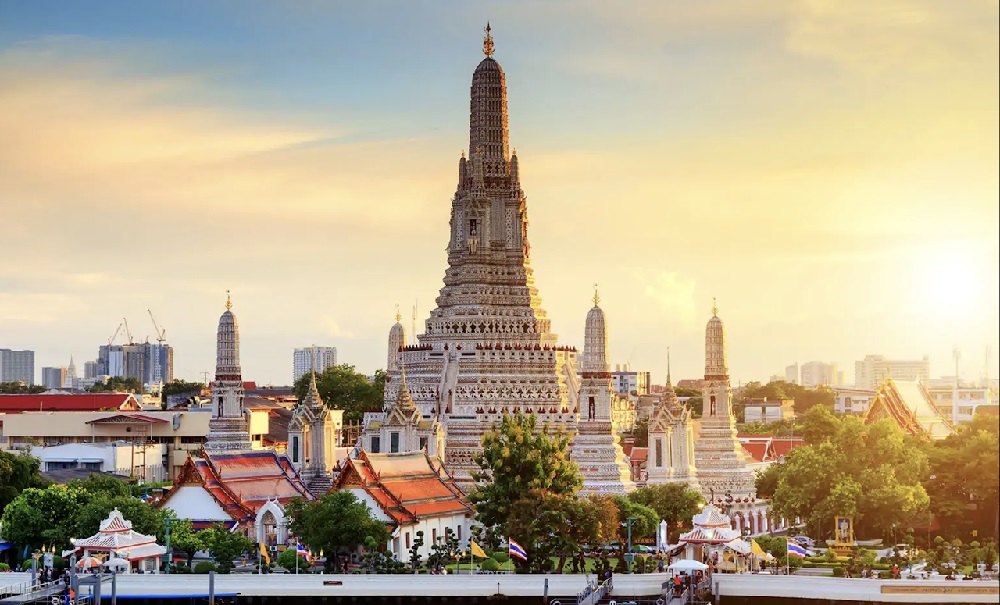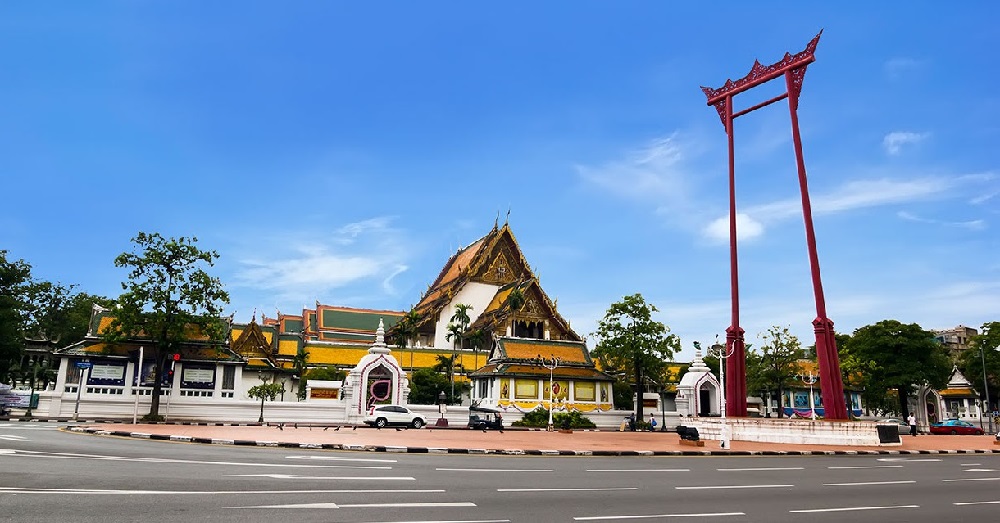
During those days, the education of monks and novices began with memorizing the Buddhist texts in their original Pali language and the Pali root forms (mulakaccayana). Only then would the monks be allowed to begin the study of the Scriptures. Candasaro pursued his Scriptural studies in the same way. He memorized the foundation materials and started studying his first scripture, the Dhammapada, a collection of sayings of the Buddha. He went on to study two other texts popular among contemporary monks: the Mangaladipani and Sarasangaha, essential texts about the Buddha, the Dhamma, the Precepts, generosity, dhutanga practice, etc., until he became so well versed that he was able to teach others.
In those days, the Scriptures were not in book form, but etched on palm leaves using Khom script. Because palm-leaf scriptures were in loose-leaf forms, students did not study the Scriptures in consecutive order from page one onward but picked chapters at random. Some students studying the Dhammapada started with earlier chapters while others with later ones. As a result, the more students attending a class, the more bundles of scriptures had to be carried to class. If a student studied privately with a teacher, he needed only to bring his own bundles of chosen texts. If a student wanted to learn what other students were learning as well, he would have to bring not only his own scripture bundles but also those chosen by other classmates. Candasaro wanted to gain as much knowledge as he could, so he carried not only his own scripture bundles but also those chosen by others as well. It was quite a heavy load to carry each day.
 Wat Arun
Wat Arun
Academic life was by no means easy. Students had to seek out their teacher. Lessons were not held in classrooms but in the teacher's quarters. If a teacher happened to reside in a remote temple, it was the duty of the students to tread the weary miles each day to go to that temple. After breakfast Candasaro would cross the Chao Phraya River1 from Wat Phra Chetuphon to Wat Arun2 (1Chao Phraya River: a major river in Thailand which flows through Bangkok and into the Gulf of Thailand) (2Wat Arun: also called the Temple of Dawn, one of Thailand's best known landmarks. The temple has existed since the seventeenth century.). At eleven he would return to Wat Phra Chetuphon for the midday meal. In the afternoon, he would attend a class at Wat Mahathat3 (3Wat Mahathat: one of the ten royal temples of the highest class, home of Mahachulalongkorn University, Thailand's oldest higher education institute for Buddhist monks). For his evening class, sometimes he would have to travel to Wat Suthat4 (4Wat Suthat: one of the ten royal temples of the highest class), sometimes to Wat Sampleum. By night, he had to attend the last class of the day at his home temple, Wat Phra Chetuphon. However, it was not every day of the week that he had such a busy schedule.
 Wat Suthat
Wat Suthat
No matter how far away the lessons were, how heavy the bundles of scriptures he had to carry, or how tired he felt, Candasaro was never absent from his classes. With heavy bundles of scriptures on his shoulder, he was a frequent passenger on the Chao Phraya River ferry between Peacock Gate Jetty and Wat Arun. The jetty-keeper became acquainted with him and was duly impressed with his industriousness. His perseverance also stirred many of the regular passengers to faith. Many invited him to receive their alms each morning. Others offered to pay his living expenses. The most faithful of his sponsors was a food peddler named "Nuam5" who undertook to provide him with breakfast and lunch daily. (5Years later, when Nuam became sick and had no one to turn to, Luangpu gave her living quarters at Wat Paknam and had the nuns look after her until the day she passed away.)
For years Candasaro travelled to many schools to study the Scriptures. More and more people were inspired by his diligence and tried to find ways to help him. So strong was their support that he was able to establish a private Pali school at Wat Phra Chetuphon using his own quarters as a classroom. He invited Phramahapee Vasuttamo, a talented monk of Pali Grade V, to be a permanent lecturer. Candasaro catered for as many as ten students and teachers in the school at his own expense. His school taught Pali up to Grade V.
Times, however, were changing in the world of Thai monastic education. The Council of Elders issued a policy directive to base Pali study on grammar rather than free translation from the root meaning. Wat Phra Chetuphon was left with no choice but to merge its various private colleges into one. Accordingly, Candasaro's Pali school ceased to exist. Candasaro was unperturbed however by the curriculum changes. Even though Pali examinations changed from oral to written, he persevered to adapt to the change.